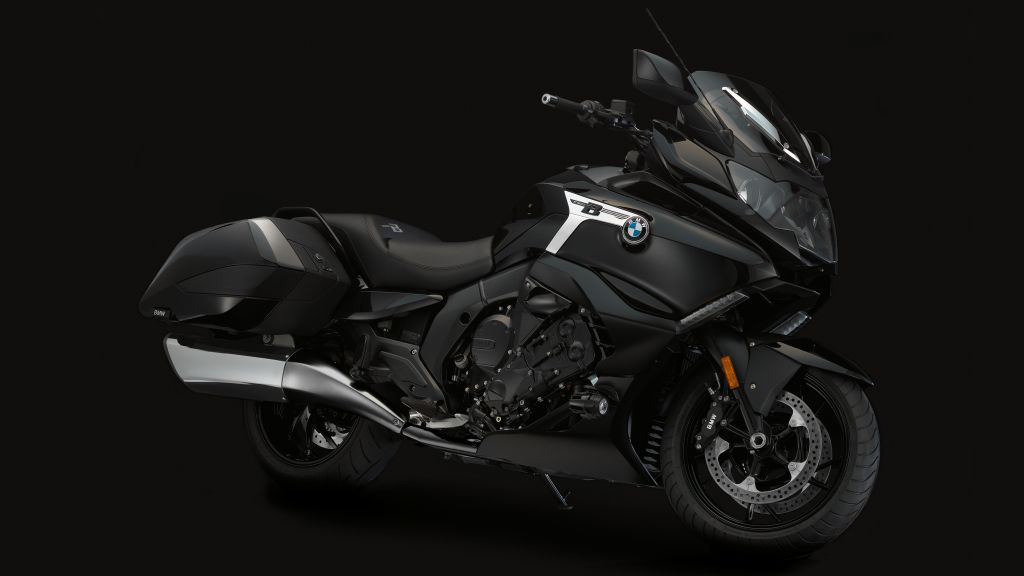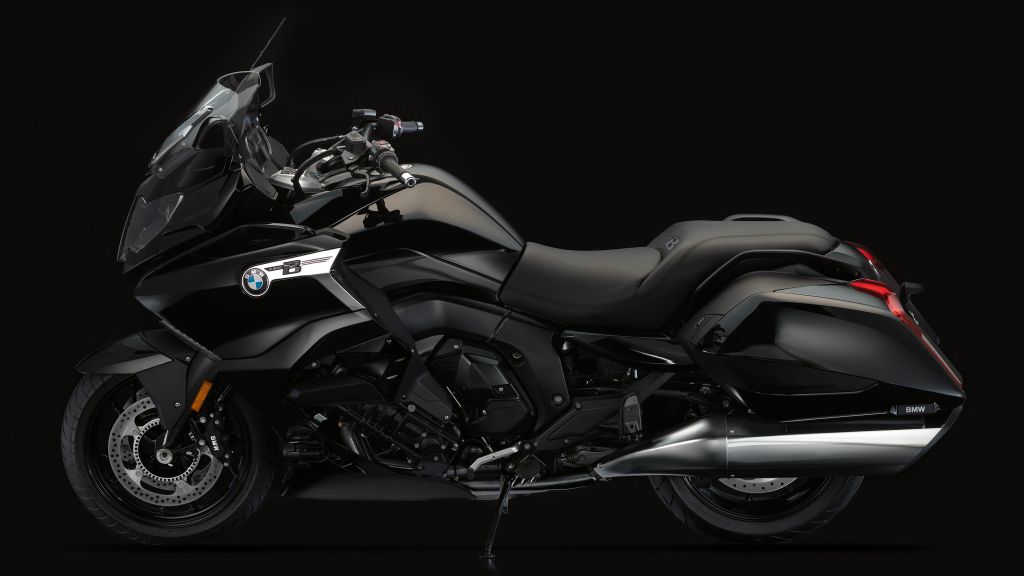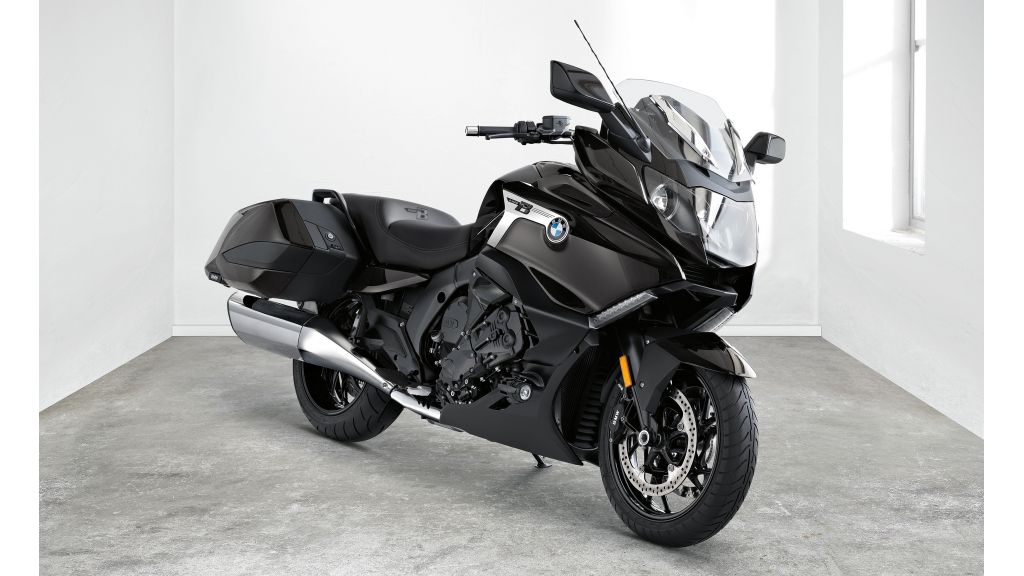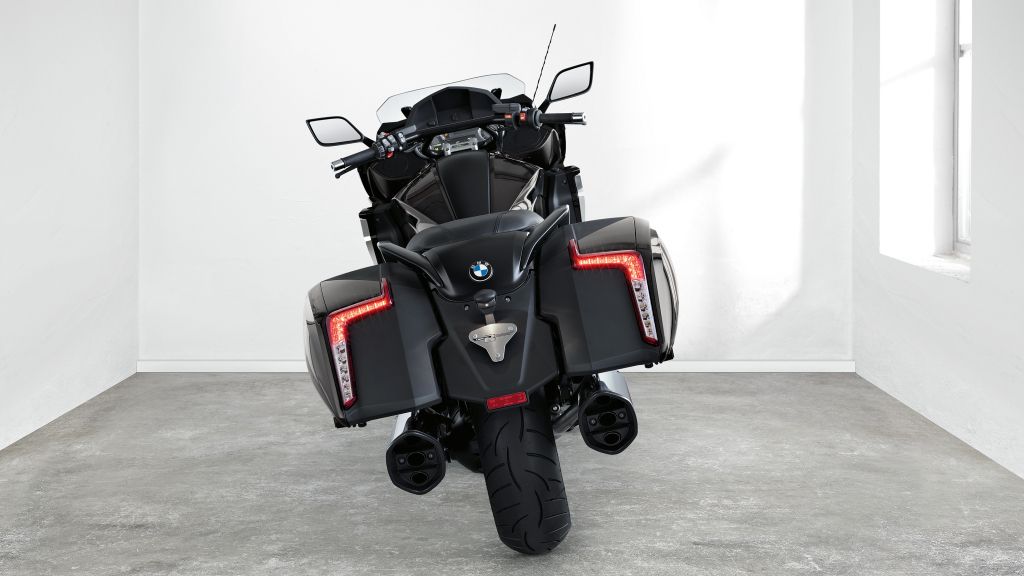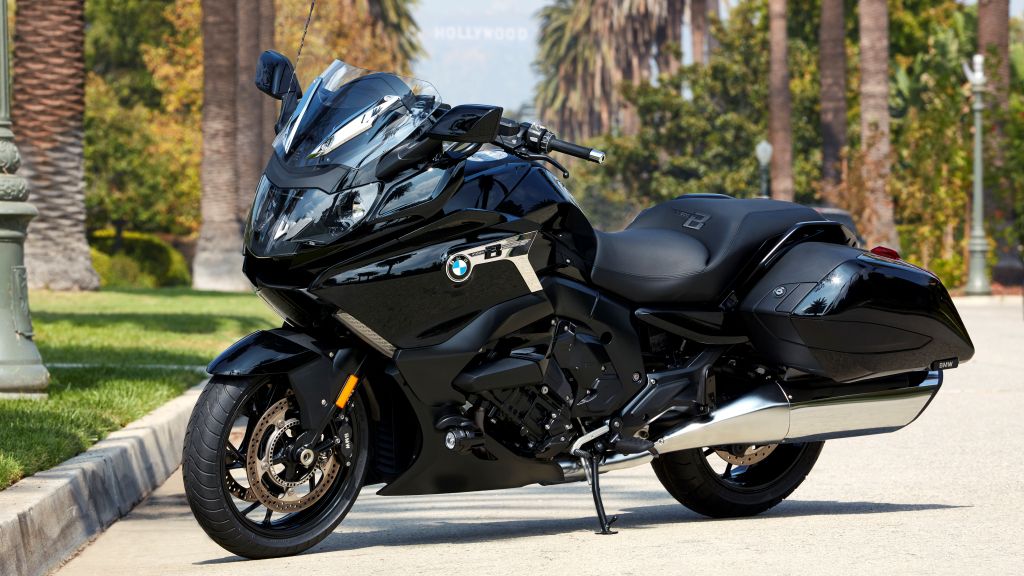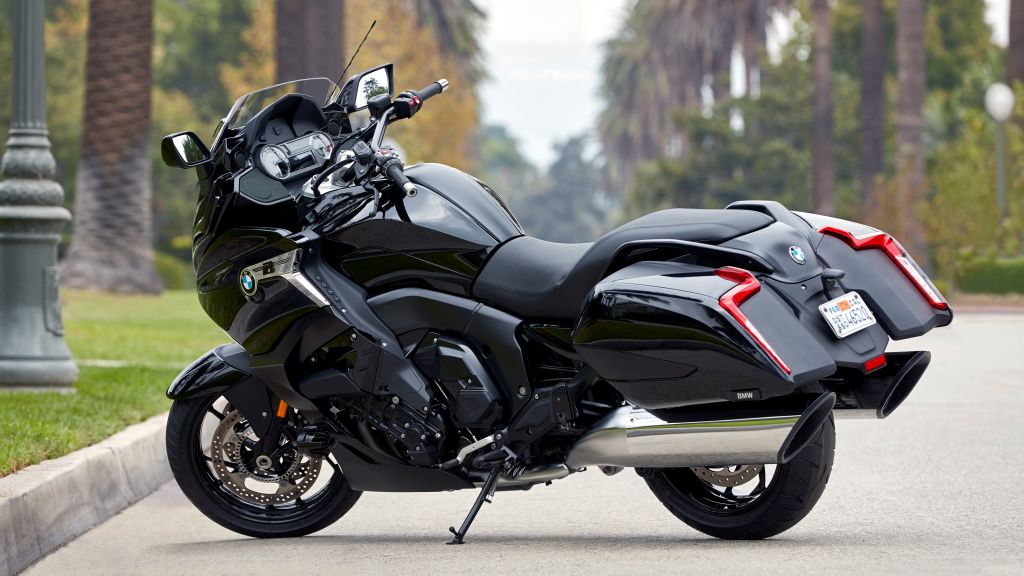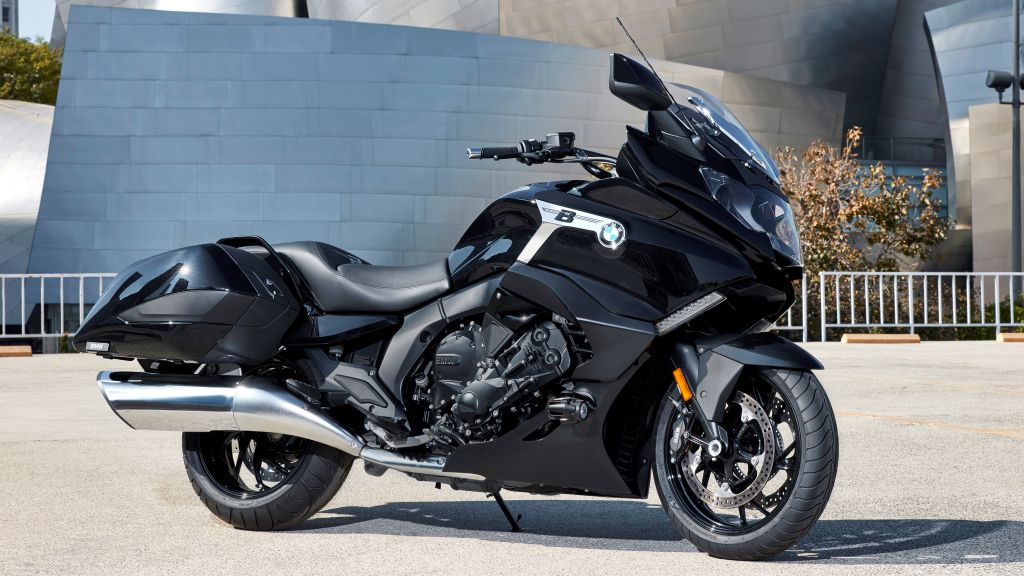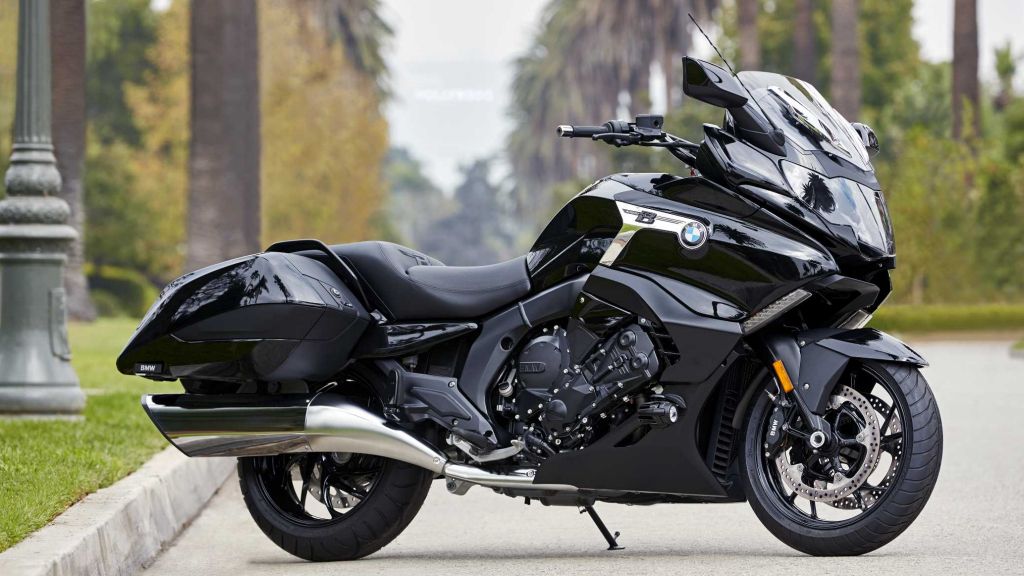Beemer->ke1398 brings its six-banger expertise and sense for the luxurious together in the K->ke3296 1600 GT. It packs a whopping 160 horsepower onto a sled that benefits from dynamic suspension and ABS to name but a few of the comfort- and safety-oriented features. This highly-anticipated machine has been widely touted by the factory as having been built specifically for touring American roads, and as we all know, touring here means something entirely different than it does in Europe. Today I want to put this new Beemer head-to-head with another major import that is already entrenched in the battle for a slice of the non-American American tourbikes->ke2669 -- the Gold Wing->ke2108 F6B from Honda->ke291. How will they stack up once the smoke has cleared?
Continue reading for my look at the BMW K 1600 B.
2018 BMW K 1600 B
- Make: Array
- Model: 2018 BMW K 1600 B
- Engine/Motor: inline-6
- [do not use] Vehicle Model: Array
Design
Right off the bat, I see some very definite similarities in the overall look of these rides. Everything looks well-planned out with nothing of “afterthought” features cobbled on, and this leaves me with a certain confidence in the vehicle as a whole. Up front we have wind-tunnel-tested fairings that provide a sizable “air pocket” for the rider while offering up ample protection from wind and weather, well, as much protection as one can reasonably expect on a motorcycle anyway.
Beemer seems to take it a bit further though, as it boosted the size of the slipstream deflectors and ran with a fuller, power-adjustable windshield as opposed to the fixed, cut-down “boulevard bruiser” deflector (I refuse to call it a windshield) on the F6B. Granted, the Honda screen looks cooler, but if I'm looking at a seriously long haul, I know that looking good does nothing to keep you comfortable.
Neither bike is bashful about throwing some light out in front either, as the dominant feature at the entry of both fairings is the fistfull of headlights and passing lamps. As minor as it seems, neither use standoff-type turn signal housings to mount the winkers. Beemer nests its flashers in a row along each side of the leading edge of the fairing scoop, while Honda integrates the lights in the mirrors, to the credit of both. As cool as the BMW method looks, I prefer Honda's method because it raises the lights to what I consider to be a more visible position, especially to the rear-view mirror of the cager in front of you. Hate to say it, but safety trumps aesthetics everytime.
Moving aft the fairings flow into the rest of the bike with only a glimpse of the powerplants, but let's be honest; neither of these manufacturers are really known for making beautiful engines, and most of their customers could care less. Unlike many elsewhere-tour bikes, these beasts come with stock hard bags, and this is another reflection of the difference in markets because the U.S. consumer both expects and requires some capacity for dry storage, and it's best if the bags look like they grew there rather than going with poorly-matched aftermarket panniers. As a matter of personal taste, the F6B looks a bit better with its almost uni-body flow and symmetry that ties all components together visually with little in the way of abrupt interruptions to same.
Chassis
These are big, heavy bikes, and as such require substantial frames to hold everything together. It seems that the manufacturers agree that bridge-type, stressed-engine aluminum frames are the best way to achieve that, 'cause that's what we have here. Honda locks in the saddle height at 28.5 inches off the ground, but Beemer thoughtfully gives customers some wiggle room, literally, with an adjustable seat height that gives us almost an inch of play between 31.9- and 32.7-inches tall. Unfortunately, the adjustment comes through different seat shapes, and you'll have to skin that checkbook if you want to avail yourself of that option.
Honda's suspension provides 4.8 inches of travel up front with 4.1 inches in back compared to 4.9- and 5.4-inches from the Beemer's stems, but the real news is the suspension adjustments. Honda sticks to the minimum standard with a preload adjuster on the rear monoshock, but Beemer takes it to the top shelf with its Dynamic Electronic Suspension Adjustment feature that reads acceleration and deceleration to constantly tune damping values. Additionally, riders can switch on the fly between the plush Road setting and the tighter Dynamic setting, so there's that.
The K 1600 B rolls with stock, cornering-optimized ABS protection, but Honda opted to limit the brake augmentation to its own Combined Brake System that shares braking effort between the front and rear, and that ain't quite the same thing. Overall, I gotta say BMW beats the pants off Honda in the chassis features, hands down.
Drivetrain
Tourbikes have a lot of pressure on them to look good and provide comfort and storage, but at the end of the day they still have to perform, so let's see what we have here. Honda runs the same iconic, 1,832 cc, flat-six engine that powers the full-dress Gold Wings. It goes without saying that both mills are going to run a water jacket and radiator with electronic fuel injection, but again Beemer takes the cake with R-b-W throttle control that enables a three-way rider mode, traction control and cruise control against the rather vanilla Honda that only carries the cruise control feature. To make it worse on the Red Riders, Beemer offers such nuggets of delightfulness as the Gear Shift Assist, Hill-Start Control and electric reverse as part of the available accessory packages-- a move Honda has no counter for.
The F6B does win in displacement with 1,832 cc tucked away within the lump versus the Beemer's 1,649 cc mill, but its advantages end there. True, it puts out a respectable 103 ponies with 109 pounds of grunt, but BMW crushes those figures with a sizzling 160 horsepower and 129 pound-feet of torque. In other words, like the chassis, the BMW engine stands head and shoulders above Honda's plant.
Price
Things don't look much better for Honda at the checkout counter. Granted, you get a lot of bike for your buck, and it rolls a heck of a lot cheaper than some of the equivalent American-made models at only $20,499. However, BMW lets go of the K 1600 B for a pittance more at $21,995. Not only do you get even more for your buck with the Beemer, but once you break 20 grand, another thousand bucks or so probably won't make you bat an eye.
Competitor
To be fair, I wanted to include another bike that should probably at least get an “honorable mention,” the Concours->ke1739 14 from Kawasaki->ke299. It's built for similar usage, but carries itself with more of a sport-tour->ke5327 look than the F6B, and even more than the K 1600 itself.
Suspension comes manually tune-able with adjustable rebound and spring preload front and rear, but nothing as sexy or expensive as the Beemer's stems. ABS and linked brakes come stock, an advantage over Honda, but it lacks the swanky corner-sensing technology Beemer bundles with the K 1600. Engine displacement falls away as well with a much smaller 1,352 cc plant, and the engine controls are simpler by far.
Although simpler, I've got to give Kawi props for its power numbers. The 150-plus horses and 100 pounds of grunt Kawi wrings from the four-bore plant is plenty to push its less-than-700-pound bulk, with plenty of fun to spare. The pricetag is probably the biggest win here at a relatively low $15,599 MSRP. Not a bad bike if you can live without all the fancy gadgets BMW brings to the table.
He Said
“I was a little surprised at just how much better the BMW came off next to the F6B, because let's face it, Honda's Gold Wing products enjoy quite a large following of faithful, and there are good reasons for that after all. Aesthetics aside, BMW wins every important category here, and is my hands-down favorite between the two.”
She Said
My wife and fellow motorcycle writer, Allyn Hinton, says, "I might have gone for a Harley-Davidson Street Glide->ke5550 as a competitor, though I can see where the look of the two bikes is different enough that they might not both appeal to the same buyer. Even though Honda didn't carry the F6B over to 2017, I can see where the look is similar enough to appeal to the buyer's eye. That angular front end almost takes me into the realm of sport-touring, for sure."
Specifications
TBA

